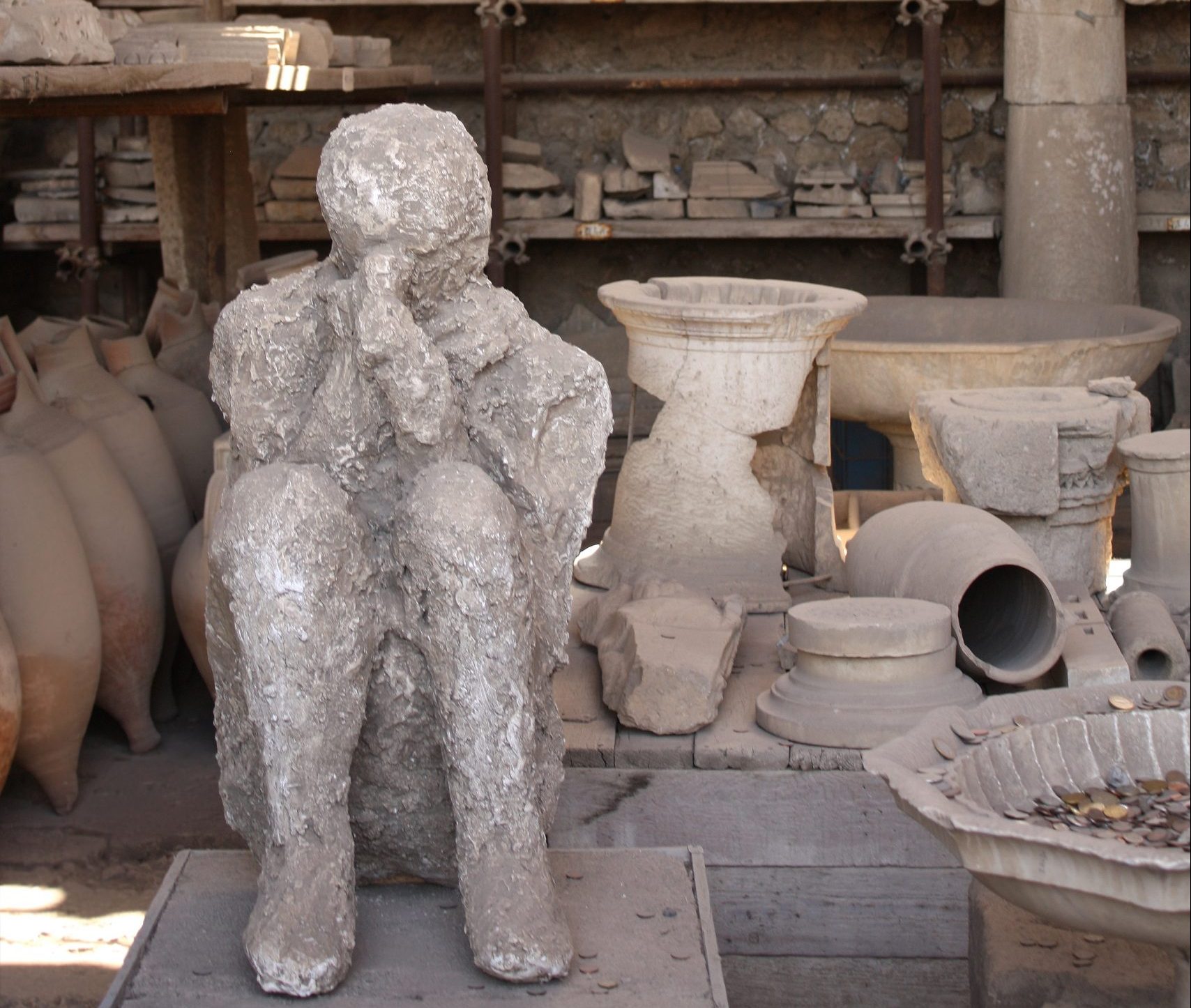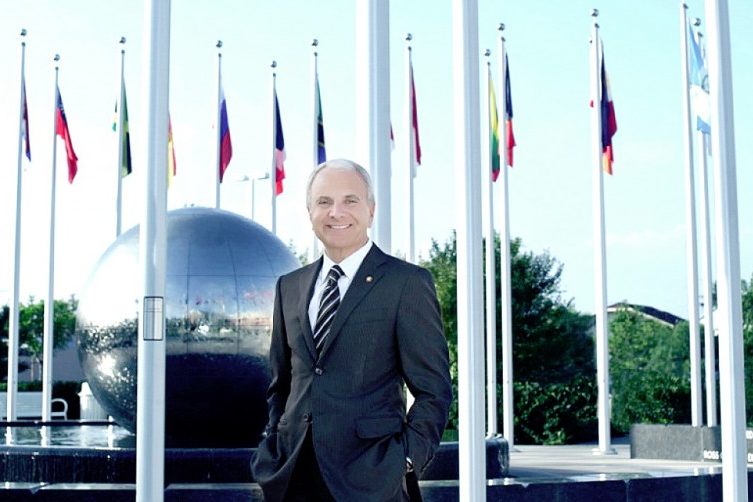The ancient Roman town of Pompeii has recently become very popular. Considering the current critical condition of the historical archaeological site, which is on the verge of collapse, drawing the world’s attention towards it could be truly beneficial.
The exhibition “The Last Days of Pompeii”, hosted at the Getty Villa in Malibu from September 12, 2012 to January 7, 2013, was followed first by the movie “Pompeii” released in February 2014, and now by another beautiful exhibit on view at the California Science Center through January 4, 2015: “Pompeii: The Exhibition.”
Most likely, the irresistible fascination of Pompeii’s history is due to its being clear evidence of Nature’s power at once to destroy and preserve, as illustrated in the final and most impressive part of the new exhibition, featuring replicas of the victims’ plaster casts frozen in time. But let’s start from the beginning.
In the first century AD, Pompeii was a wealthy and vibrant center located in Campania region, as testified by the remaining artifacts and buildings from that time, and home to about 25,000 inhabitants. The town’s luxurious lifestyle and refined culture are elegantly reproduced at the California Science Center through a scenic set of faux columns and mosaic floors, displaying 150 original artifacts on loan from the Naples National Archaeological Museum in Italy. These illustrate different aspects of daily life in Pompeii, from culinary traditions to religious practices, from bathing habits to social entertainment.
Among them are marble statues and busts of Roman emperors, fountains decorating the gardens, wall frescoes, gladiators’ armor, silver coins, golden jewels, bronze and wooden home furnishings, figurines of protective house deities, terracotta amphorae, iron tools used for cooking or gardening, and a bronze bathtub.
Also particularly interesting are the informative panels and videos explaining the structure of ancient Roman houses, from the Peristylium (open courtyard) to the Triclinium (dining room) and Vestibulum (entrance hall), as well as some peculiar facts like the origins of fast-food restaurants then called Thermopolia. A restricted section is dedicated to the explicit art and statuary found in Pompeii’s brothels, whose ruins are among the best conserved up to the present day.
Discovered at the archaeological site as a result of the excavations started in the mid-1700s, all of these objects are very well-preserved yet extremely fragile and at risk of deterioration due to exposure to the open air and sun. Because of this fragility, even if only a small portion of Pompeii’s hidden treasures has been discovered so far, Italian laws prevent continued excavation in order to focus instead on conservation efforts.
While walking through the quiet and opulent routine of the town, visitors suddenly find themselves caught in the midst of the catastrophe of 79 AD, when Pompeii and the nearby Herculaneum were destroyed by a violent eruption of Mount Vesuvius, the local volcano. A CGI simulation reproduces the last 48 hours of Pompeii, allowing visitors to experience the devastating power and effect of the explosions through special effects such as shaking floors, rumbling sounds, blowing wind, and artificial fog. Nevertheless, both the simulation and the next section of the exhibit, showing casts of the victims, are kid-friendly.
As earthquakes were fairly frequent in the area and the volcano had been dormant for ages, Pompeii’s inhabitants didn’t see the disaster coming: over 2,000 people were killed by the extreme heat, toxic fumes, and thick ash that buried them along with the whole town. In a semi-dark room, visitors can see 3-D copies of the original human body casts made in the 19th century by Italian archaeologist Giuseppe Fiorelli, director of excavations at Pompeii.
Fiorelli and his team introduced an innovative technique, aimed at reconstructing dead bodies buried under layers of ashes and debris by pouring plaster into hollows in the ground. Today, thanks to the latest forensic and archaeological technologies, the new challenge is to reveal the faces underneath these ghostly plaster casts.
The exhibition – which according to California Science Center President Jeffrey
Rudolph “allows guests to reach across time and gain a deeper understanding and human connection with this ancient culture and its people” – ends with an educational section, including an overview on different types of volcanoes, compared on the basis of gas and viscosity criteria. Mount Vesuvius represents the so-called Plinian type, prone to explosive eruptions. The name derives from Pliny the Younger who described the 79 AD devastation that killed his uncle, a general in the Roman navy, and provided the primary source of information on the event.
Other hands-on-science features explore archaeological conservation methods and Roman engineering. Collateral to the exhibition is also the IMAX film “Forces of Nature”, produced by National Geographic Films. It focuses on volcanoes, tornadoes, and earthquakes for the audience to learn more about detection and prevention against these destructive phenomena.
“Pompeii: The Exhibition” was first shown at the Franklin Institute in Philadelphia. From the California Science Center in Los Angeles, it will travel to the Pacific Science Center in Seattle.





























